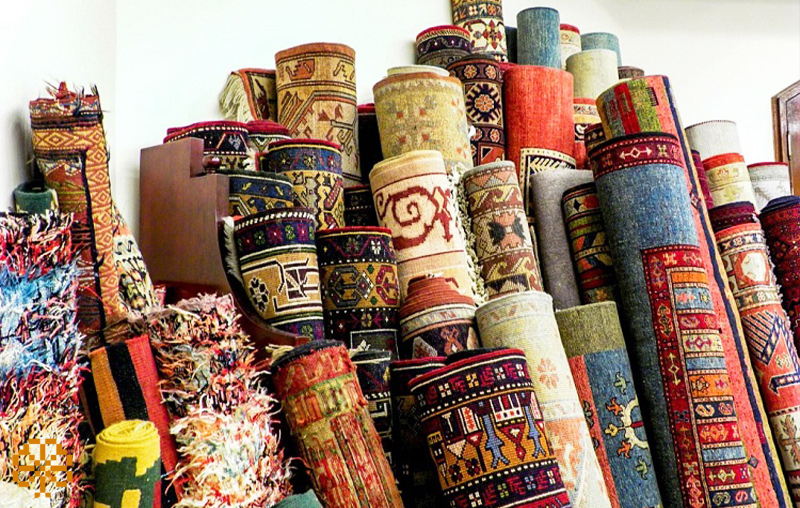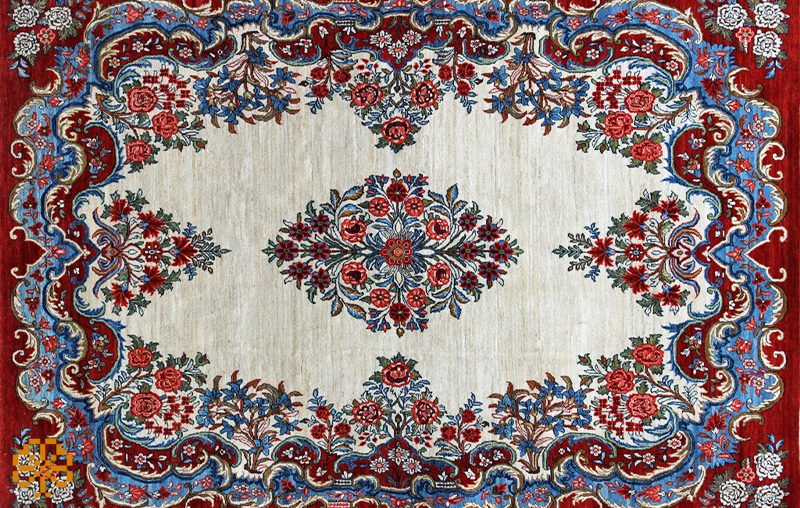What is the rajshomar handmade carpets and how is it calculated?

, from which the quality, price, elegance and items of a rug can be guessed. We are all familiar with the name density and fully understand its meaning, but this density has one meaning when used in machine-made carpets and another in handmade carpets!
In this article about Farahan carpet, we intend to go to the method of rajshomar handmade carpets in different cities after a general knowledge of raj and counting, and then we will study concepts such as rajshmar table and raj gabbeh.
What is the rajshomar handmade carpets?
Raj literally means knot in carpet weaving in Tabriz, but it is conceptually the same as rajshomar handmade carpets, and if we want to express their meaning, it is necessary to define prerequisites for you before that so that you can define its meaning. Understand perfectly.
Understanding the unit of arm in carpet weaving
Zara is a measuring scale that is not very accurate and fixed. By this we mean that the arm can be different depending on the location and the city in which we are located.
The forearm is a common scale measured between cloth sellers and weavers, measuring between the middle finger of our left hand and the middle finger of our right hand. This size is 104 cm in many areas, especially in Isfahan, which is very important in the field of carpet weaving, while in the city of Tabriz it is 112 cm.
Zara scale entered handmade carpets from Tabriz from Tabriz. Tabriz carpet weavers measure the number of knots on a certain scale to determine the density of the carpet texture, and Zara is the basis of this measurement.
Relationship between handmade carpets and rugs
As we have said, the carpet weavers of Tabriz, in order to have a criterion for measuring the density of the number of knots in the carpets woven by themselves, entered the carpet weaving basin.
To do this, they divided each arm, which is equal to 112 cm in Tabriz, by the number 16 and obtained the number 7 cm, and counted the number of carpet knots in this 7 cm.
In fact, the more knots of carpet woven in this 7 cm, the higher the quality and price of the woven carpet and the more exquisite and valuable the carpet.
Over time, to this scale of 7 cm, a term attributed to the ridge or ridge count of handmade rugs, in simpler terms, each ridge is the length and longitudinal density of the rug or the number of knots in the length and width of the rug.
But as we have mentioned, the unit of Zara and consequently the number of carpets in different areas of carpet weaving are sometimes different, in Isfahan the number of Zara instead of 112 is 104 and in Kerman this number is 108 and so on. In Isfahan it is 6.5 (16/104) and in Kerman it is 6.75 (168/108).
A few examples of calculating the rajshomar handmade carpets
So far, we have carefully studied how to calculate the ridge in the carpet, but perhaps due to the large number of figures, you have problems with understanding it, which we want to make clear to you by giving an example.
For example, when we say that the rajshomar handmade carpets is 50, it means that for every 7 cm of the width of this carpet, 50 knots are woven. But in Isfahan carpet, the use of 50 count means that for every 6.5 cm of carpet width, the number of woven knots is 50.
The main numbers that we need to know exactly are 7 and 6.5. Because in Tabriz, all Turkish weaving carpets use the number 7 cm to calculate the number, and the same is true for Persian weaving carpets, using the number 6.5 cm in Isfahan.
The point that you have to pay attention to, because it is very wrong, is that counting is by no means a centimeter or anything, but just a number. This number also tells you only the number of carpet knots in 7 cm (or 6.5 cm).
Important Note: The number of knots can be counted instead of the transverse unit in the longitudinal unit, but since the carpet is woven transversely, it is better to count the number of knots across the width of the carpet.
Read more: What is a long pile or shaggy rug? 9 features and its main feature
How to count rajshomar handmade carpets
In the previous section, we talked about the rajshomar handmade carpets (Turkish and Persian), but one thing that may be on your mind is how we are able to determine the number of knots per 7 cm (or 6.5 cm). ) To get?
It is interesting to know that this is very simple and accessible in handmade carpets, you just need to rotate the carpet and from the back of the carpet, you can easily count the number of knots in a unit of 7 cm by placing a ruler. Calculate.
If you are going to buy or sell your handmade carpets, the point that needs to be paid attention to is that carpets can be said to be of high quality and exquisite that are the same in different parts of the carpet count, this issue shows uniformity. The texture is in the carpet.
Another issue that needs to be stated about ridge is that it is not possible to express a linear relationship between the number of ridges and the elegance of the carpet, in fact this relationship is ascending and with increasing number, the fineness of the carpet is significantly higher. goes.
What is a carpet counting table?
A slightly specialized subject that may not be very well studied in the text is the hand-woven rug count table. Training on how to use and recognize this table is mandatory for those who intend to do carpet weaving in a specialized way.
This table and the information in it are about the number of knots in the carpet, the material and type of weft, the type of weave and the number of yarns, and depending on the type of handmade carpet, it can be completely changed and is a kind of work guide for carpet weavers. That even varies from workshop to workshop.
Important points about carpet counting
There are terms and cases that are used in different parts of Iran about carpet counting, which we will introduce to you in the form of headlines:
The use of the words 6-ply and 9-ply indicates the number of layers of cotton yarn used in carpet wefts. Usually, a 6-ply carpet is equivalent to a 60-digit number and a 9-layer carpet is equivalent to a 50-digit number.
The next option that we need to introduce is the word 100, which indicates the number of 100 knots used in the width of the carpet. The use of this term is common in the city of Isfahan.
The term house is the next option; This term is common in Kashan. Each “house” has 10 knots, and in this term we mean the number of “houses” in half the width of the carpet. For example, the carpet of 46 6-meter houses has 460 knots in one meter of carpet width. Therefore, this carpet is equivalent to 30 rows.
Tone is the next word, this term is common in Yazd. In this method, the number of tones is called the number of warp yarns that are stretched in half the width of the carpet, and in this way, knots will be woven in half the width of the carpet, equal to half the number of tons. For example, a 6-meter “840-ton carpet” has 420 knots per meter of carpet width. Therefore, this carpet is equivalent to 28 rows.
We have tried our best to introduce you to everything you need to know about the number of handmade carpets, but if there is a topic or points that need to be mentioned about this topic or there is a question about the mentioned topics, you can in the section Tell us its suggestions in Farahan Carpet as a specialized collection of handmade carpets.






